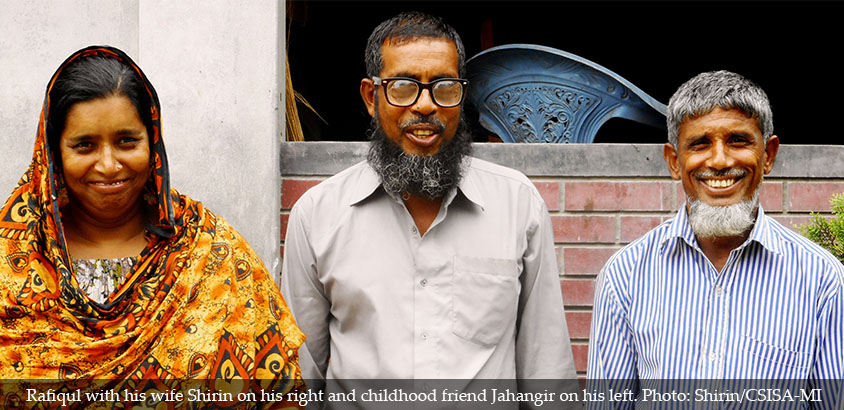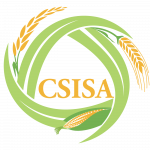Reaping Benefits from Rice and Wheat
 In Kalukhali, Rajbari district, Bangladeshi farmers mostly cultivate paddy, which requires engaging a large labor force in order to harvest the crop. Mohammad Rafiqul Islam, an experienced agricultural service provider, was keen to minimize labor expenses in order to accelerate his business profits. After seeing a reaper in the neighboring village that harvested the crop faster, thus helping in timely planting of the subsequent crop, he decided to purchase this new machine. Imported and marketed by ACI company, this machine was suitable for reaping wheat and Amon and Aush paddy.
In Kalukhali, Rajbari district, Bangladeshi farmers mostly cultivate paddy, which requires engaging a large labor force in order to harvest the crop. Mohammad Rafiqul Islam, an experienced agricultural service provider, was keen to minimize labor expenses in order to accelerate his business profits. After seeing a reaper in the neighboring village that harvested the crop faster, thus helping in timely planting of the subsequent crop, he decided to purchase this new machine. Imported and marketed by ACI company, this machine was suitable for reaping wheat and Amon and Aush paddy.
“Initially, my family members were against the big investment of US$ 2,360 for purchasing this machine,” said Rafiqul. “They told me this will be a costly deal,” he added. Previously, Rafiqul would hire 10 laborers for around two weeks to harvest 3.57 hectares of land, which used to cost him around US$ 1,300.
Despite facing resistance at home, Rafiqul bought the reaper anyway, and he didn’t regret it. Even after hiring a machine operator and purchasing fuel, Rafiqul could save around US$ 1,230 in labor costs from harvesting his land in less than two weeks. Additionally, he generated an income of US$ 76 by providing harvesting services to others for one more week.
“The demand for reaper services will increase in the dry season, and if weather conditions remain favorable, more than 20 hectares of land can be harvested by the machine,” said Mohammad Jahangir Jowarder, a reaper operator working with Rafiqul Islam.
The benefits extend beyond the farm and are helping make Rafiqul’s family life more comfortable. “Earlier, during the harvest season I could not sleep more than three hours per night. I had to prepare at least four meals for ten laborers as well as dry, thresh, pack and store around 80 kg of paddy every day. But this time it’s different. I am able to rest in the evenings – first time in 30 years!” laughed Rafiqul’s wife Shirin Sultana, who originally opposed the decision to invest in the machine. So far, local service providers have supported more than 6,000 farmers with this machine covering 2,200 ha of farm land.
“The reaper is fast becoming popular among farmers. In short time, 55 local service providers have bought the reaper and harvested more than 2,000 hectares of land of more than 6,000 farmers,” said Subrata Chakrabarty, Project Manager, CSISA-MI. “It can be the most extensively used technology for rice and wheat harvesting in the next five years in Bangladesh,” he added.
Funded by USAID, the Cereal Systems Initiative in South Asia – Mechanization and Irrigation (CSISA-MI) Project – part of US President Obama’s Feed the Future (FtF) Initiative – is facilitating the market promotion of the reaper machine in collaboration with ACI. CSISA-MI seeks to transform agriculture in southern Bangladesh by unlocking the potential productivity of the region’s farmers during the dry season, while conserving the land’s ability to produce quality crops in the long term through surface water irrigation, efficient agricultural machinery and local service provision.
This article is authored by M. Shahidul Haque Khan, Communications Officer, CIMMYT-Bangladesh.
Tags: ACI, CSISA-MI, mechanization, Reaper
